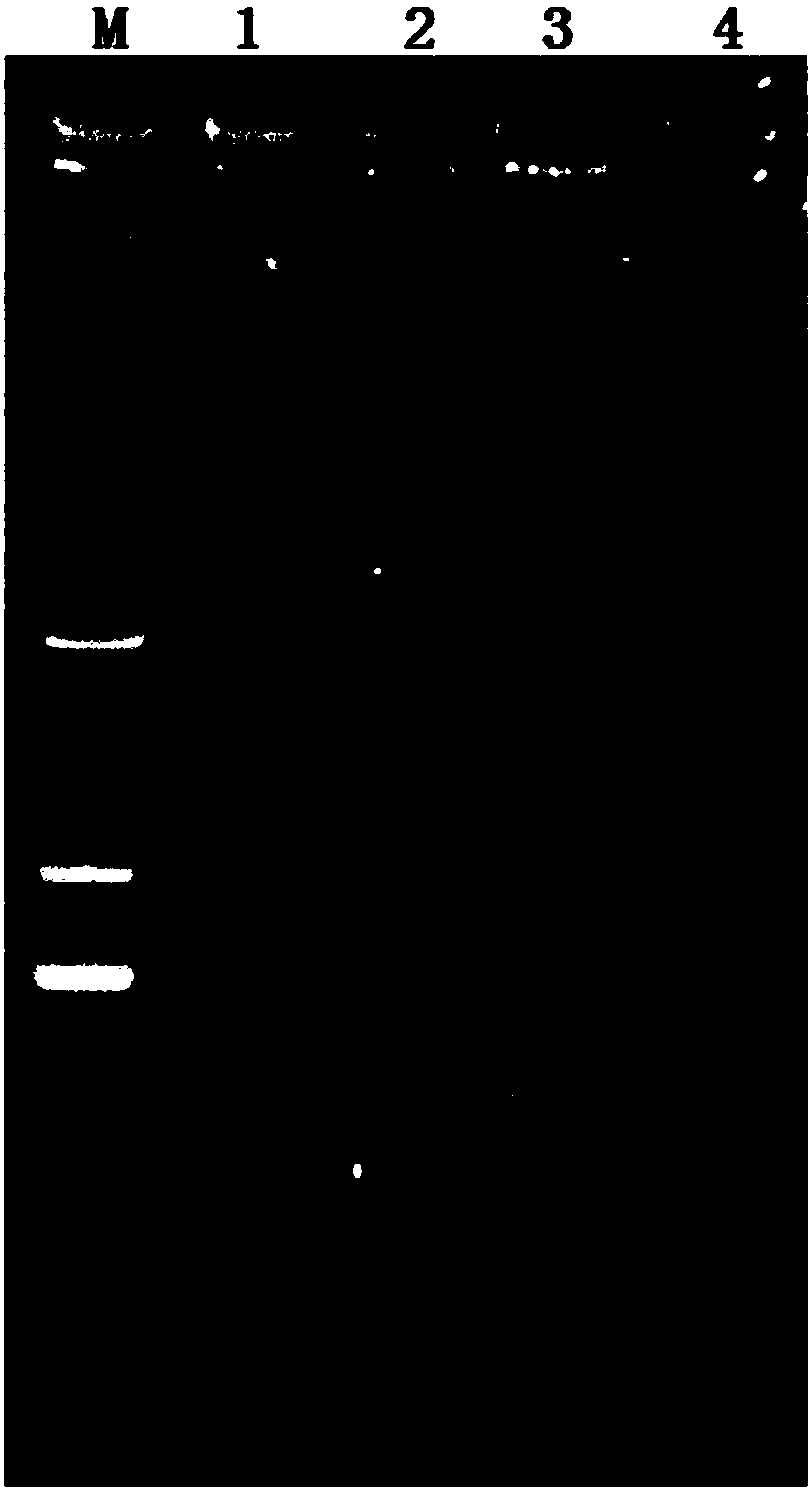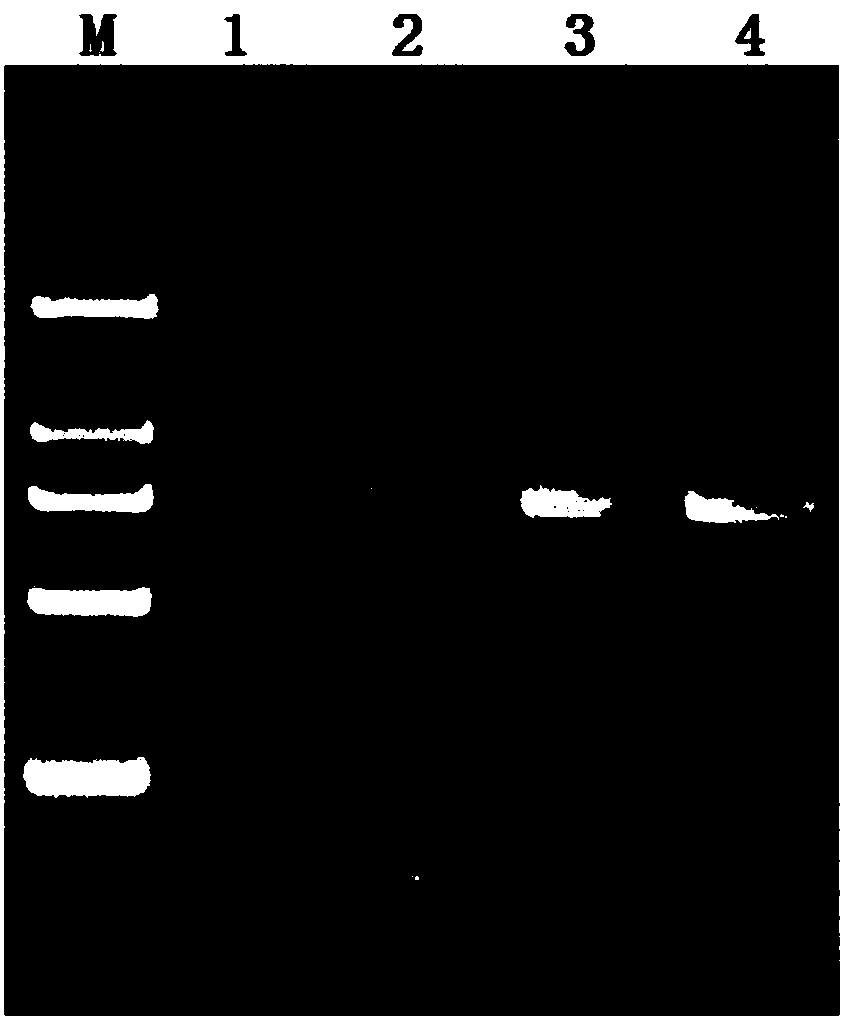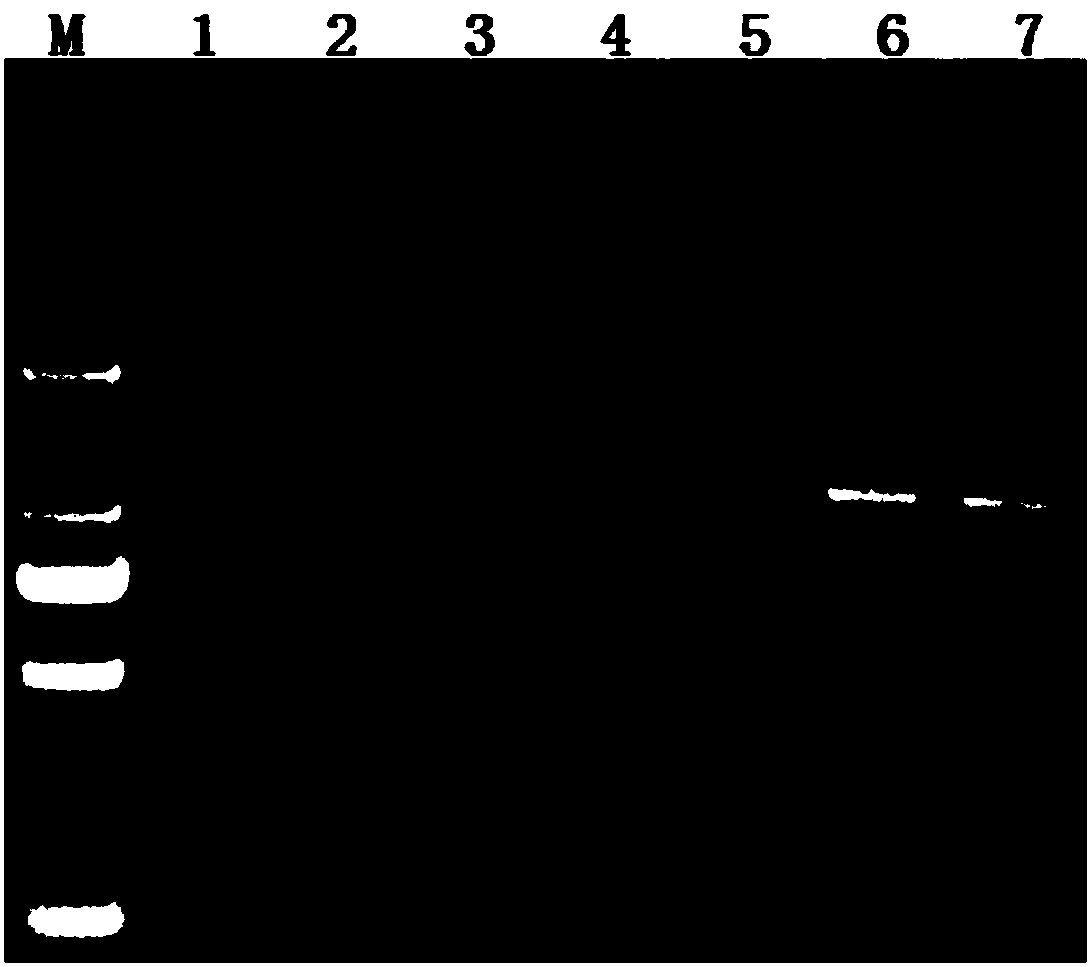Multiplex PCR (Polymerase Chain Reaction) detection primer group and kit for fast distinguishing porcine deltacoronavirus from porcine kobuvirus
A technology for detecting coronaviruses and primers, which is applied in the field of diagnosis in the field of veterinary biotechnology, and can solve problems such as difficulties in clinical diagnosis
- Summary
- Abstract
- Description
- Claims
- Application Information
AI Technical Summary
Problems solved by technology
Method used
Image
Examples
Embodiment 1
[0035] 1. Primer design
[0036] According to the PDCoV and PKoV sequences included in GenBank, by comparing the differences between PDCoV and PKoV, design specific primers L1, L2, L3 and L4, as follows:
[0037] L1: 5'-CCTGACACCAACCTGCAGCG-3' (SEQ ID NO.1)
[0038] L2: 5'-GCCCAATGAGTGTACGTCATGCGCTG-3' (SEQ ID NO.2)
[0039] L3: 5'-AGTAGTCCCTACTACTGACGCGT-3' (SEQ ID NO.3)
[0040] L4: 5'-CTACGCTGCTGATTCCTGCT-3' (SEQ ID NO.4)
[0041] Using primers L1, L2, L3 and L4 for PCR amplification, the predicted amplified fragment size of PKoV is 743bp, and the amplified fragment size of PDCoV is 1017bp.
[0042] 2. Extraction of viral RNA
[0043] (1) Take the cell culture fluid of the virus strain, after repeated freezing and thawing 3 times, centrifuge at 5000g for 15min, and take the supernatant for subsequent use;
[0044] (2) Take 0.2 mL of chloroform, add an equal volume of supernatant, shake vigorously for 15 s, leave at room temperature for 3 min, and then centrifuge at 12,00...
Embodiment 2
[0071] The optimization of embodiment 2 primers
[0072] According to the PDCoV and PKoV sequences included in GenBank, by comparing the differences between PDCoV and PKoV, we designed PDCoV-specific primers L5 and L6, as follows:
[0073] L5: 5'-ACATCAGCTGCTACCTCTCCG-3' (SEQ ID NO.5)
[0074] L6: 5'-GGTGGCTCATAGGTCTGGTTAAC-3' (SEQ ID NO. 6)
[0075]Using primers L5 and L6 for PCR amplification, the expected amplified fragment size of PDCoV is 516bp. The method of Example 1 was used to amplify, and no target band appeared in the swimming lane. It was found that the annealing temperature of the PCR reaction was 55°C ( Figure 7 ), which is inconsistent with the annealing temperature of PKoV, and cannot be amplified in the same PCR reaction program, so the simultaneous detection of the two viruses cannot be completed.
[0076] Example 3 Amplification Results
[0077] Take PDCoV and PKoV as samples respectively, detect according to the method in embodiment 1, electrophoresis...
Embodiment 4
[0078] Example 4 specificity
[0079] Porcine circovirus, porcine blue ear disease virus, porcine pseudorabies virus, swine fever virus, porcine parainfluenza virus, porcine parvovirus, and porcine rotavirus were used as control strains, and PDCoV and PKoV were used as experimental strains. The method in example 1 detects ( Figure 9 ), the results showed that only PDCoV and PKoV could obtain 1017bp and 743bp fragments respectively, and no amplification bands were produced by other viruses. Experimental results prove that the primer and detection method of the present invention have high specificity.
PUM
 Login to View More
Login to View More Abstract
Description
Claims
Application Information
 Login to View More
Login to View More - R&D
- Intellectual Property
- Life Sciences
- Materials
- Tech Scout
- Unparalleled Data Quality
- Higher Quality Content
- 60% Fewer Hallucinations
Browse by: Latest US Patents, China's latest patents, Technical Efficacy Thesaurus, Application Domain, Technology Topic, Popular Technical Reports.
© 2025 PatSnap. All rights reserved.Legal|Privacy policy|Modern Slavery Act Transparency Statement|Sitemap|About US| Contact US: help@patsnap.com



